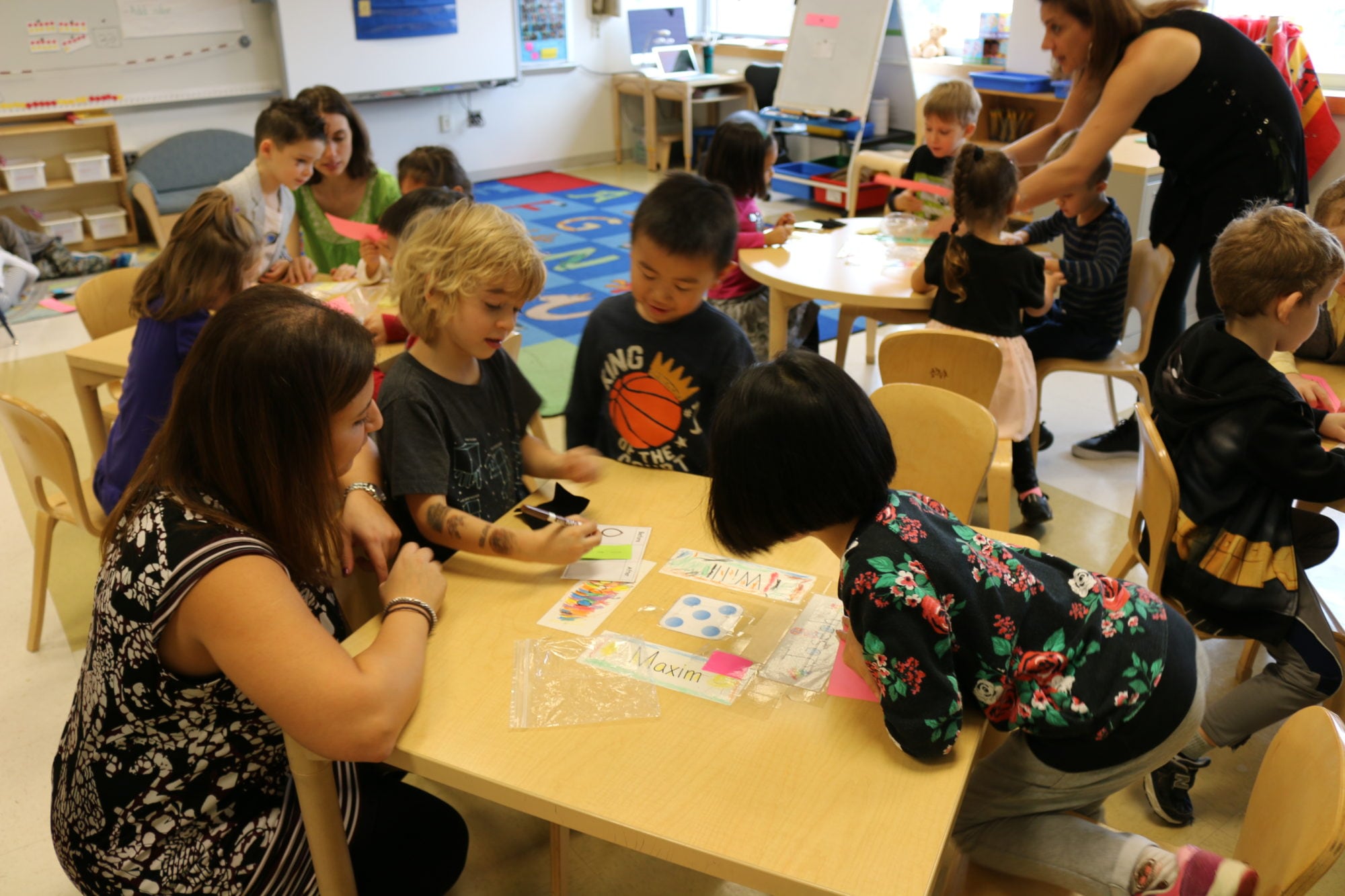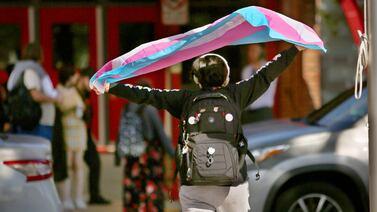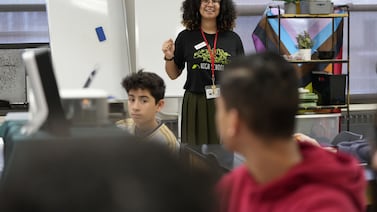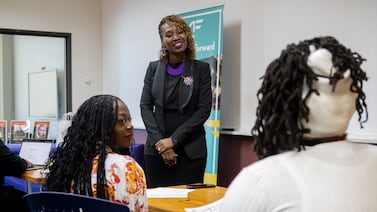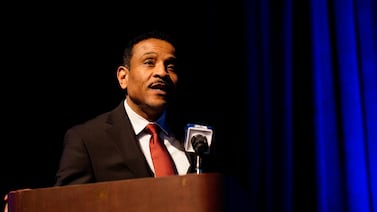New York City’s gifted program has been criticized for years for relying on a single admissions test given to 4-year-olds, which locks students into separate classes until middle school and results in enrollment that doesn’t reflect the diversity of the school system.
Earlier this month, Mayor Bill de Blasio unveiled a blueprint for a new program — without an admissions test for preschoolers — that promises to provide tailored instruction while students remain in mixed-ability classrooms.
Both approaches are flawed, experts told Chalkbeat.
With just a few months left in his tenure, de Blasio’s plans are at best a guide for the next leader of New York City to consider, and the Department of Education has promised to get feedback from parents and community members. Eric Adams, the Democratic nominee who is widely expected to win election in November, has made it clear he would pursue his own approach to reform.
The uncertainty has created an opportunity to reimagine a program that currently admits just 2,500 kindergartners to about 80 schools.
There is near-total agreement among experts who spoke to Chalkbeat that New York City’s current gifted programming has two major flaws: Admission is based on a test given to very young students, and those results sort students into gifted for all of elementary school. Joni Lakin, an associate professor at the University of Alabama who researches identification practices for gifted programs, called that “just bonkers.”
She said tests for preschoolers are more likely to measure a family’s social advantages — economic and otherwise — and aren’t likely to be a good indicator of how students will perform later in school.
“They should have the opportunity to be identified and served later,” she said.
Under de Blasio’s proposal, which would be phased in over time, teachers would be trained to provide accelerated learning in kindergarten to second grade. By third grade, all students would be screened to determine whether they should receive specialized coursework. It’s unclear what that would look like, but the city’s plan calls for students to remain in mixed-ability classrooms. That approach can create other problems, said Eric Calvert, associate director of the Center for Talent Development at Northwestern University.
With training and support, many teachers can meet the needs of most students in their classroom, he said. But in many of the schools and districts he works with, “it winds up being implemented really inconsistently,” especially with newer teachers.
“They don’t know how to keep different groups of students doing different things on task on time, they wind up with a chaotic classroom. And to escape that chaos they wind up bringing it to one-class-fits-all,” he said.
Why starting early can be helpful
Though New York City’s current gifted programs are an outlier for starting in kindergarten, experts said that offering “gifted-like experiences” early on may be beneficial.
Frank Worrell, a professor of education and psychology at the University of California, Berkeley, said it might be especially important for students who have the potential to excel in school, but have had fewer opportunities to show or develop that potential, such as those who come from low-income families. Waiting longer to serve those students means there’s a chance for opportunity gaps to grow, he said.
For that reason, other experts said the city should “front-load” opportunities. That would mean providing younger students with experiences similar to a gifted classroom and then identifying students later for specialized programs.
One way to do that is through the “schoolwide enrichment model,” which has gained some traction in New York City as a potential alternative to the current gifted program. Under the model, students dive into their areas of strength and interest, with teachers guiding hands-on projects tailored to the student.
Lakin pointed to a different approach taken by the U-46 school district outside of Chicago. The district dispatches gifted specialists to every elementary school that receives Title I funding, a pot of federal money meant to support schools with a high percentage of low-income students. Second and third graders in those schools participate in regular classes with a specific curriculum designed to boost critical thinking and problem-solving skills. The idea is to better prepare students to qualify for the district’s gifted program, which starts in fourth grade.
Differentiation versus acceleration
Experts said schoolwide enrichment models can be a good start — but not enough to meet the needs of students who are far ahead of their peers.
“A lot of the objections to the de Blasio plan is, thinking about those students who do need an opportunity to go farther, faster in math, or are ready for more advanced reading or science instruction. Just implementing the schoolwide enrichment model doesn’t provide that,” Calvert said.
It’s unclear what programming for gifted students in third grade and up would look like under de Blasio’s proposal. Officials say they are collecting feedback from parents and educators to help shape that. Officials have said it could include some pull-out classes, but that students would largely remain in mixed-ability classrooms.
Researchers said students identified as gifted need more targeted opportunities.
“As soon as you get rid of specialized services, are they going to forget about high-ability kids entirely? That’s the risk,” Lakin said. “Not all students need gifted services, and if all students can be successful, it’s not gifted services.”
Scott Peters, a professor of assessment and research methods who studies gifted education at the University of Wisconsin-Whitewater, pointed to Fairfax County, Va., as an example of a district that provides multiple types of intervention for students who are identified as gifted. Some receive pull-out services in their own school, while others are identified for full-time programs.
“We should absolutely be doing a lot less separating of these kids, unless there is literally no other way to provide a particular service,” Peters said.
Another promising approach: acceleration. Supported by research, acceleration usually involves starting school earlier, skipping grades, or moving through content more quickly — rather than tying instruction to a student’s age. In practice, that could mean that a third grader who is ready for more challenging math could join a fifth-grade classroom for that subject.
That model has the advantage of avoiding separate classrooms, while still serving students who are ready to move ahead of their classmates.
Though de Blasio’s proposal calls for acceleration for students from kindergarten through second grade, researchers said what the mayor is describing likely isn’t that. They said it sounds more like differentiation, in which teachers tailor instruction to individual needs.
That could be a particularly hard sell in New York City, where, perhaps more so than anywhere else in the country, students are sorted into separate schools based on their academic performance.
One meta-analysis of mixed-ability classrooms showed positive effects for low-performing students, and no effects for higher achievers. When gaps among students are very large, there may be no benefit for anyone. And that’s often the case, researchers said, with five to seven different grade spans in a typical classroom. When teachers rely on differentiation, the needs of high-performers usually aren’t met, some research suggests.
Bronx mom Jennifer Fox said she is skeptical that advanced students can be served well in mixed-ability classrooms. Even in a gifted program at a district school, she said her then-kindergartner couldn’t check out more challenging books because the teacher said students weren’t supposed to start above a certain reading level. Her daughter now attends Manhattan’s NEST+m, a school that only accepts children who score highest on the gifted test.
“We schlep from the Bronx to the Lower East Side. Nobody in their right mind would do that voluntarily without a very good reason. However, I am very skeptical of the DOE being able to provide differentiated education in the classrooms,” Fox said.
Screen students differently
Researchers applauded the city’s proposal to screen every student for gifted services (though it’s not clear what the new admissions system will look like.)
Some said the city should also change its metrics for deciding who needs advanced classes, so students are compared at the school-level rather than a citywide admissions standard, which makes it harder for disadvantaged students to compete. One study found that moving to local norms increased identification of Black and Latino students in 10 states by 300% and 170%, respectively.
Such an approach could have the benefit of expanding gifted education opportunities to more students. New York City’s current program, which only enrolls 2,500 kindergartners a year, shuts out many students who qualify. Peters said the city’s program is known for being too small, which, he said bluntly, “is so dumb.”
“It’s hard for me to overstate it,” he said. “A lot of this is just silly, artificial scarcity.”
Potential pitfalls
Even in districts that use universal screening and multiple measures, such as test scores and teacher recommendations, programs still often aren’t representative of the larger school system, said Allison Roda, an assistant professor at Molloy College who has studied New York City’s gifted programs.
She doesn’t believe students need to be served separately.
Roda said other attempts to expand programs or prepare students for admission to selective programs haven’t worked. Just look at the city’s coveted specialized high schools, she said. Despite expanding the number of specialized high schools and offering test prep, and other opportunities to disadvantaged students to secure seats, the schools enroll few Black and Latino students.
Roda said segregation makes it a challenge to bring students up to speed in schools with concentrated levels of poverty. New York City is home to one of the most segregated school systems in the country. She pointed to the uneven resources she has seen in the gifted programs she has studied in the city.
“The G&T classes had the fancy printers and the nice rugs. And whatever the teachers needed, the parents donated,” she said. “It seems more equitable to have mixed-ability classes… in terms of resources and parent involvement and what parents can donate.”
She said teachers need more credit for implementing differentiation strategies, arguing that even gifted classrooms are full of students at different performance levels. There are promising practices, she said, like cooperative learning groups, where students at different academic levels work together.
“A lot of times this gets framed as you’re taking something away from me and my child, and to expand it, to provide these opportunities to more students, that feels like losing something. But that’s just a zero sum ideology. I don’t think that’s real,” she said. “Your child will still have an advantage in the system, and your child will still have access to opportunities — but other children will too now. And it won’t be so exclusive, and there won’t be such a small number of opportunities.”


